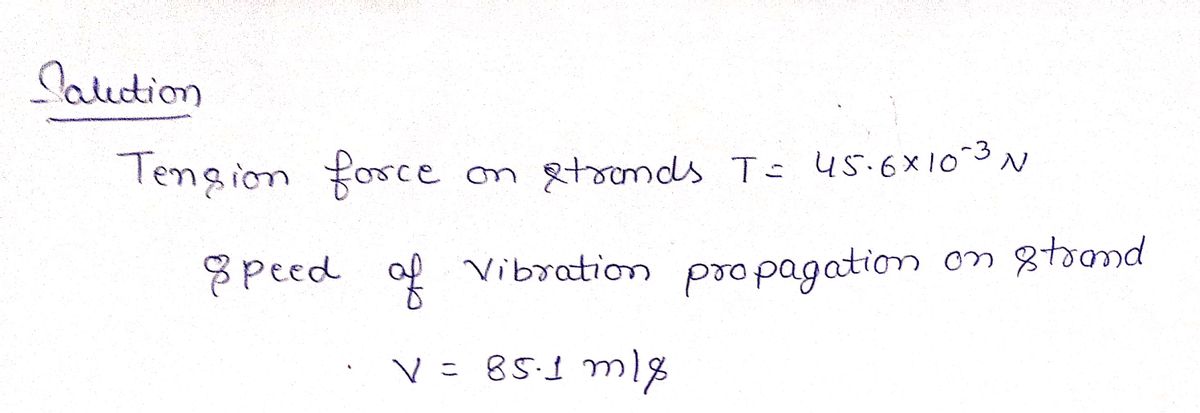Spider strands are very strong and light due to their nano-fiber composition. Spiders use different gland types to produce different silks, with some spiders generating up to eight known types of silk. Spiders often lay silk lines and then spool them up to the desired amount of tension. The radial strands of a particular spider's web was measured to have a tension force of 45.6*10-3N. Vibrations were found to propagate along these strands at a rate of 85.1 m/s. a) What is the mass per unit length of this spider silk? b) A 11 mg fly caught in the web beats it's wings at a frequency of 244 Hz. What is the wavelength of the vibration set up along the spider silk?
Simple harmonic motion
Simple harmonic motion is a type of periodic motion in which an object undergoes oscillatory motion. The restoring force exerted by the object exhibiting SHM is proportional to the displacement from the equilibrium position. The force is directed towards the mean position. We see many examples of SHM around us, common ones are the motion of a pendulum, spring and vibration of strings in musical instruments, and so on.
Simple Pendulum
A simple pendulum comprises a heavy mass (called bob) attached to one end of the weightless and flexible string.
Oscillation
In Physics, oscillation means a repetitive motion that happens in a variation with respect to time. There is usually a central value, where the object would be at rest. Additionally, there are two or more positions between which the repetitive motion takes place. In mathematics, oscillations can also be described as vibrations. The most common examples of oscillation that is seen in daily lives include the alternating current (AC) or the motion of a moving pendulum.
Spider strands are very strong and light due to their nano-fiber composition. Spiders use different gland types to produce different silks, with some spiders generating up to eight known types of silk. Spiders often lay silk lines and then spool them up to the desired amount of tension. The radial strands of a particular spider's web was measured to have a tension force of 45.6*10-3N. Vibrations were found to propagate along these strands at a rate of 85.1 m/s.
a) What is the mass per unit length of this spider silk?
b) A 11 mg fly caught in the web beats it's wings at a frequency of 244 Hz. What is the wavelength of the vibration set up along the spider silk?

Step by step
Solved in 2 steps with 2 images









